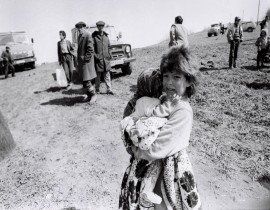Politicon.co
Emancipatory Nationalism in Spain and the Ethnic Conflict in Catalonia: how the development of the former led to the Catalan secessionist movement
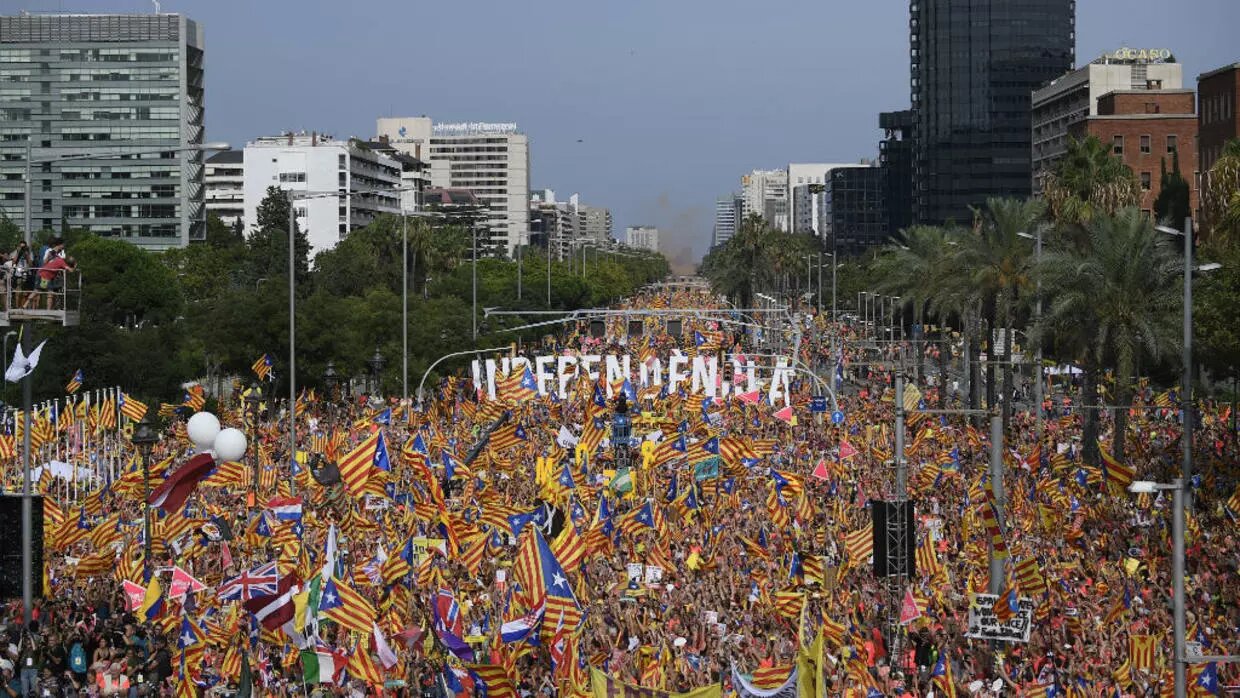
Photo: Huge protest in Barcelona on September 11, 2018, on the National Day of Catalonia, the Diada. LLUIS GENE/AFP VIA GETTY IMAGES
The investigation of ethnic conflicts has always been in the research agenda of political and social sciences. There have been numerous theories and hypotheses to explain fundamental causes behind the onset of ethnic conflicts: modernization theory by Donald L. Horowitz (1985), relative deprivation and ethnic accommodation hypothesis by Ted Gurr (1970), conflict entrepreneurship theory by V. P. Gagnon (1994-95), clash of civilizations by Samuel Huntington (1996), just to name a few. However, majority of these powerful theories fail to explain one particular conflict – Catalan ethnic conflict. Even though Catalan people enjoy significantly high living standards in the autonomous community of Catalonia established in accordance with the Spanish constitution of 1978, which guarantees Catalan region a limited autonomy as a federal entity in broad policy areas, willingness and movement to secede from Spain has recently escalated in Catalonia. Therefore, this paper aims to examine and verify the hypothesis that homegrown ‘emancipatory nationalism’ developed throughout history is one of the most relevant key factors behind the recent shift from devolution to secessionist movement that triggered an ethnic conflict in Catalonia, compared to other factors. The Catalan secessionist movement is an unrest intended to attain the right of Catalan citizens to decide upon their political future through referendum to be recognized as a constitutional mean to secede from Spain. Emancipatory nationalism as an alleged cause of the conflict is defined as a novel type of democratic nationalism rising in some Western liberal democracies where nation and state are not so coextensive in scope that nations seek for political independence through democratic means such as a referendum.
Some of prominent theories in ethnic conflict and peace studies fail to explain the onset of the ethnic conflict in Catalonia. In this section, the applicability of the selected cluster of those theories is examined.
Modernization theory by D. Horowitz (1985): modernization theory assumes that an ethnic conflict occurs in a country where an economic growth is unevenly distributed amongst various ethnic groups. The essence of the theory is that class cleavages and ethnic cleavages overlap as economic modernization leads to a division in the society into rich and poor classes, which naturally triggers clashes between those groups as a consequence of the unequal distribution of wealth. Despite its robustness, modernization theory seems inapplicable to Catalan ethnic conflict. Catalonia is the most prosperous region of the country with 19% share of Spain’s GDP. According to the recent publication by Elcano Royal Institute, regional GDP of Catalonia in 2018 was made up of 25% of Spanish exports and 21.9% of jobs derived from foreign direct investment.
Conflict entrepreneurship theory by V. P. Gagnon (1994-1995): conflict entrepreneurship theory alleges that political elites cause ethnic conflicts by instrumentalizing ethnic differences and interests in order to create a political context to take advantage of. It states that elites subsequently exploit ethnic tensions through the means of diverse social institutions such as mass media, education, ideology, etc. However, it is apparent that Catalan ethnic conflict is essentially driven by grassroots and masses, not elites per se. This statement is empirically inferred from the fact that the current conflict is motivated by historical records of hostility, resentment, violence and negligence of Spanish authorities towards Catalan citizens that ignited intense feeling of nationalism.
Relative deprivation theory by T. Gurr (1970): relative deprivation theory is related to social inequality in a given society and clearly an outcome of a rapid modernization. As unequal distribution of resources in the society increases, groups and individuals demand for more to close the gap. There is a strong belief that they are entitled to desired conditions (value expectations) and capable of getting what they desire via revolts and riots (value capabilities). It is claimed that a cogent resolution to the impasse prompted by relative deprivation is ethnic accommodation. Since modernization theory is barely applied to the conflict in Catalonia, as mentioned before, relative deprivation theory could automatically be discarded. As a solution to the conflict, all available aspects of ethnic accommodation are also provided to Catalan people: Catalonia is granted a territorial and cultural autonomy, Catalan people are represented by their very own parliament Generalitat and central government included Catalan authorities in power-sharing arrangements that had previously been excluded during Franco’s dictatorship.
Clash of civilizations by S. Huntington (1996): clash of civilizations theory argues that cultural and religious identities of different groups are the underlying driver of an ethnic conflict. It implies that violence occurs as a result of a clash between cultures instead of countries. For this hypothesis to be verified, those cultures must not contain a common feature. This hypothesis could clearly be falsified by the ongoing conflict in Catalonia. Catalan and Castilian (Spanish) cultures are closely interrelated as they have evolved under the same roof throughout history. For instance, their languages have similarities since they share the same latin and romantic roots, and they both belong to Catholicism in terms of religion.
Taking into account all the points above, the primary source of the recent escalation of Catalan conflict is not likely to be one of these theories rather a unique cause that belongs to Catalan people.
The beginning of the Catalan identity finds itself in the Frankish conquest of Girona in 785 and Barcelona in 801 where a protectorate of Carolingian counts, appointed by the Frankish kings, assumed functions of representation, administration, military and justice. The first count of Barcelona (Bera) was followed by a succession of appointments made by notable local families and others of Frankish origin. By the year 1000, the counties that made up Catalonia had no political unity but were united by a common identity of language. Starting from the end of the 15th century, the joint reign of the Queen of Castile and the King of the Crown of Aragon led to the governance of two nations, Castilians and Catalans, under the same monarchs without any institutional change until of the appointment of the Count Duke of Olivares as the chief minister by Philip IV in 1621. This fundamental alteration in statehood was intended to establish a powerful absolutist state of Castilians in Spain. Consequently, this move provoked one of the first ferocious nationalist revolutions of Catalans in 1640, the Revolt of the Reapers. The situation got exacerbated when the Treaty of Utrecht acknowledged Philip V as the King of Spain in 1713. Philip V declared a regime of occupation of Catalonia and the dismissal of all Catalan political institutions, proclaimed Castilian as the official language and prohibited Catalan. This fact led to further frustration since language played a key role as a symbol of identity in Catalonia. Even today, language and culture remain as core elements of the Catalan identity. “The central importance of language in present-day Catalonia means that cultural and political nationalism often coincide. In Catalonia, social actors concerned with language and politics do not necessarily play different parts because language is an overriding concern which sometimes supersedes even economic interests” (Conversi, 1994).
By the end of the 19th century, the huge influence of the German Romanticism (Renaixença) known as the movement for cultural and national renaissance precipitated demands for Catalan autonomy and a federal state. The history demonstrates that the Catalan nationalism emerged out of the various types of nationalism reinforced by different political ideologies and cultural influences, from the conservative nationalism of Jaume Balmes, to the federalism of Francisco Pi i Margall, the Catholic nationalism of Josep Torres i Bages, or the Catalan Marxism of Andreu Nin, among many others (Balcells, 1996), rather than as a uniform occurrence. The roots of modern Catalan nationalism, however, date back to the times of Franco’s dictatorial regime. The victory of Franco in the Spanish Civil War (1936-1939) after the 1936 coup d’état against the II Spanish Republic resulted in the suppression of Catalan political institutions and the prohibition of Catalan language, flag, national anthem and all other symbols of Catalan identity. Franco’s regime went further by detaining, torturing and executing key figures of the Catalan government Generalitat and democratic political parties with the sole intent to obliterate Catalans as a nation. During that tough period, Catalan nationalist non-violent movement escalated in response to the homogenizing policies of the dictatorial regime. Hence, the Assembly of Catalonia was founded by approximately 300 people from diverse political, social and professional spheres of Catalonia in 1971. Their activities were aimed at bringing democracy, liberal policies and autonomy for Catalonia together. Following the death of Franco, resistance to the decentralized and absolutist state by Catalans culminated when nearly one million dissenters demanded for the political autonomy in 1977, which ended up with the 1978 Spanish Constitution and 1979 Statute of Autonomy. The enactment of both legal instruments characterized as the transition of Spain from dictatorship to democracy. In a democratic regime, which is still the case today, Catalonia is legally recognized as a nationality that has a right to political autonomy albeit in a unitary state of Spain. For instance, Article Two of the 1978 Spanish Constitution proclaims: “The Constitution is based upon the indissoluble unity of the Spanish Nation, the common and indivisible patria of all Spaniards, and recognizes and guarantees the right to autonomy of the nationalities and regions that make it up and solidarity between all of them”. Within the Article 1.1 of the 1979 Statute of Autonomy, the sovereignty of Catalonia is also implied: “In order to accede to self-government, constitutes itself as a Self-Governing Community in accordance with the Constitution and with this Statute”.
With the introduction of democracy, Catalan nationalism evolved to become a particular type of nationalism in Western democracies – emancipatory nationalism. Emancipatory nationalism is frequently noticed in Western democracies where state and nation are not coextensive in a sense that nations insist on not transforming their traditions and nationalism is not favored by the central government as a mean to homogenize and attain the social cohesion. Spain could be an example to such a country in which Spanish state and Catalan nationality are not coextensive and do not revive together. Throughout history, Catalan people have usually been ignored, neglected and punished, and their symbolic elements of nationality were forbidden by the central state, be it during the rule of kings or dictators. The unsympathetic and irresponsive attitude of the Spanish state towards Catalans’ willingness for greater devolution has nourished distrust, resentment and hostility in Catalan citizens. This demand for greater devolution became a gradual movement for secessionism ever since the transition to and consolidation of democracy, as Spanish citizens, in this case Catalans, were allowed to fearlessly express their political aspirations for autonomy. People are now persuaded of the legitimacy of the emancipatory claims for political autonomy by the means of a referendum. Thereby, being a democracy with the constitutional rights of people to popular sovereignty and national self-determination, Catalan nationalists have always prioritized to demand for emancipation through a non-violent and democratic referendum. It is not a coincidence that ever since the escalation of the conflict there have been several referenda on independence and self-determination, 1 October 2017 Catalan independence referendum being the most recent one. To derive a logical conclusion from the above- mentioned analysis of the emergence of the modern Catalan emancipatory nationalism, in a Western liberal and democratic country like Spain, Catalans assert that their emancipatory nationalist claim for independence is the consent of people that must be compromised on the grounds of legitimacy, rule of law and popular sovereignty. The Catalan secessionist movement favors the right of people to popular sovereignty and to decide upon their political future by the means of a referendum. The onset of the conflict is hence closely associated to the prohibition of the Spanish state to hold an independence referendum for Catalonia. Therefore, there is a robust correlation between the homegrown Catalan emancipatory nationalism and the recent shift in the willingness of Catalan citizens from status-quo to secessionism.
References:
- Balcells, A. (1996). “Catalan Nationalism” London: Macmillan
- Conversi, D. (1994). “Language, Immigration and Nationalism: comparing the Basque and Catalan cases” London School of Economics and Political Science
- Emanuelsson, T. (2018). “Does symbolic recognition matter: secession-inducing features of symbolic recognition in two autonomous sub-state entities within Spain” Department of Political Science. Lund University
- Etherington, J. (June, 2003). “Nationalism, National Identity and Territory: the case of Catalonia” Departament de Ciència Política i de Dret Públic, Universitat Autònoma de Barcelona
- Gagnon, V. P. (1994-95). “Ethnic Nationalism and International Conflict: The Case of Serbia” International Security Vol. 19, No. 3 (Winter, 1994-1995), pp. 130-166. MIT Press
- Guibernau, M. (2014). “Prospects for an Independent Catalonia” International Journal of Politics, Culture, and Society 27(1), 5-23
- Gurr, T. (1970) “Why Men Rebel, Chapter 2: relative deprivation and the impetus to violence”
- Hong, J. W. (2005). “Power-Sharing Solutions on Ethnic Conflicts: A comparative analysis of institutional effects on ethnic politics”. Hankuk University of Foreign Studies. The Korean Journal of International Relations, Volume45, Number5, 2005
- Horowitz, D. (1985). “Ethnic Groups in Conflict” Berkeley, University of California Press Huntington, S. (1996). “Clash of Civilizations and the Remaking of World Order”
- Judd, R. T. (2014). “Corruption and Catalan Independence” South Carolina Journal of International Law and Business, Volume 10, Issue 2, University of South Carolina School of Law
- Keating, M. (2008) “Rival nationalism in a plurinational state: Spain, Catalonia, and the Basque Country” Constitutional Design for Divided Societies: Integration or Accommodation? Oxford: Oxford University Press. p. 316-341
- Levrat, N. et al. “Catalonia’s Legitimate Right to Decide: paths to self-determination”
- Commission of International Experts.
- Moreno, L. “Ethnoterritorial Concurrence and Imperfect Federalism in Spain” Instituto de Estudios Sociales Avanzados (CSIC) Working Paper 93-10
- Reniu, J. (2014). “Could Catalonia become independent” International Journal of Legal Information 42(1), 67-74
- (2019) “The independence conflict in Catalonia” Real Instituto Elcano, Madrid, Spain. www.realinstitutoelcano.org
![]()
- TAGS :
- Separatism
- nationalism
- Spain
- Catalonia
- secession
- REGIONS :
- Western Europe



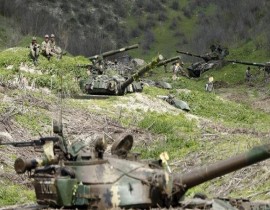
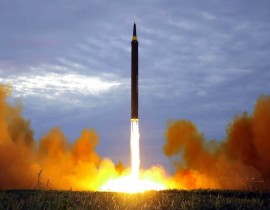
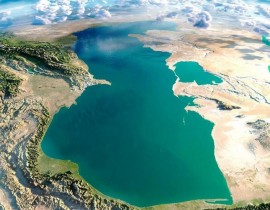
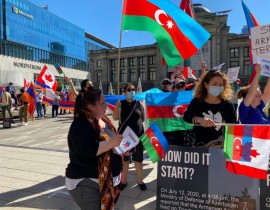
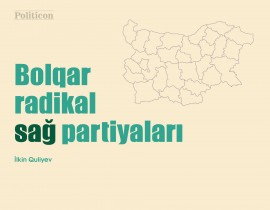
jpg-1599133320.jpg)
